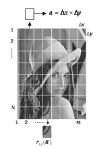Neural computation of visual imaging based on Kronecker product in the primary visual cortex
- PMID: 20346118
- PMCID: PMC2865487
- DOI: 10.1186/1471-2202-11-43
Neural computation of visual imaging based on Kronecker product in the primary visual cortex
Abstract
Background: What kind of neural computation is actually performed by the primary visual cortex and how is this represented mathematically at the system level? It is an important problem in the visual information processing, but has not been well answered. In this paper, according to our understanding of retinal organization and parallel multi-channel topographical mapping between retina and primary visual cortex V1, we divide an image into orthogonal and orderly array of image primitives (or patches), in which each patch will evoke activities of simple cells in V1. From viewpoint of information processing, this activated process, essentially, involves optimal detection and optimal matching of receptive fields of simple cells with features contained in image patches. For the reconstruction of the visual image in the visual cortex V1 based on the principle of minimum mean squares error, it is natural to use the inner product expression in neural computation, which then is transformed into matrix form.
Results: The inner product is carried out by using Kronecker product between patches and function architecture (or functional column) in localized and oriented neural computing. Compared with Fourier Transform, the mathematical description of Kronecker product is simple and intuitive, so is the algorithm more suitable for neural computation of visual cortex V1. Results of computer simulation based on two-dimensional Gabor pyramid wavelets show that the theoretical analysis and the proposed model are reasonable.
Conclusions: Our results are: 1. The neural computation of the retinal image in cortex V1 can be expressed to Kronecker product operation and its matrix form, this algorithm is implemented by the inner operation between retinal image primitives and primary visual cortex's column. It has simple, efficient and robust features, which is, therefore, such a neural algorithm, which can be completed by biological vision. 2. It is more suitable that the function of cortical column in cortex V1 is considered as the basic unit of visual image processing (such unit can implement basic multiplication of visual primitives, such as contour, line, and edge), rather than a set of tiled array filter. Fourier Transformation is replaced with Kronecker product, which greatly reduces the computational complexity. The neurobiological basis of this idea is that a visual image can be represented as a linear combination of orderly orthogonal primitive image containing some local feature. In the visual pathway, the image patches are topographically mapped onto cortex V1 through parallel multi-channels and then are processed independently by functional columns. Clearly, the above new perspective has some reference significance to exploring the neural mechanisms on the human visual information processing.
Figures









Similar articles
-
The representation of visual depth perception based on the plenoptic function in the retina and its neural computation in visual cortex V1.BMC Neurosci. 2014 Apr 23;15:50. doi: 10.1186/1471-2202-15-50. BMC Neurosci. 2014. PMID: 24755246 Free PMC article.
-
Receptive field self-organization in a model of the fine structure in v1 cortical columns.Neural Comput. 2009 Oct;21(10):2805-45. doi: 10.1162/neco.2009.07-07-584. Neural Comput. 2009. PMID: 19548804
-
Synaptic Correlates of Low-Level Perception in V1.J Neurosci. 2016 Apr 6;36(14):3925-42. doi: 10.1523/JNEUROSCI.4492-15.2016. J Neurosci. 2016. PMID: 27053201 Free PMC article.
-
Bottom-up and top-down dynamics in visual cortex.Prog Brain Res. 2005;149:65-81. doi: 10.1016/S0079-6123(05)49006-8. Prog Brain Res. 2005. PMID: 16226577 Review.
-
Theoretical understanding of the early visual processes by data compression and data selection.Network. 2006 Dec;17(4):301-34. doi: 10.1080/09548980600931995. Network. 2006. PMID: 17283516 Review.
Cited by
-
The representation of visual depth perception based on the plenoptic function in the retina and its neural computation in visual cortex V1.BMC Neurosci. 2014 Apr 23;15:50. doi: 10.1186/1471-2202-15-50. BMC Neurosci. 2014. PMID: 24755246 Free PMC article.
References
-
- Miikkulainen R, Bednar JA, Choe Y, Sirosh J. Computational Maps in the Visual Cortex. Berlin: Springer Science +Business Media, Inc; 2005.
-
- Nicholls JG, Martin AR, Wallace BG, Fuchs PA. From Neuron to Brain. Fourth. Sinauer Associates, Inc; 2001.
Publication types
MeSH terms
LinkOut - more resources
Full Text Sources

